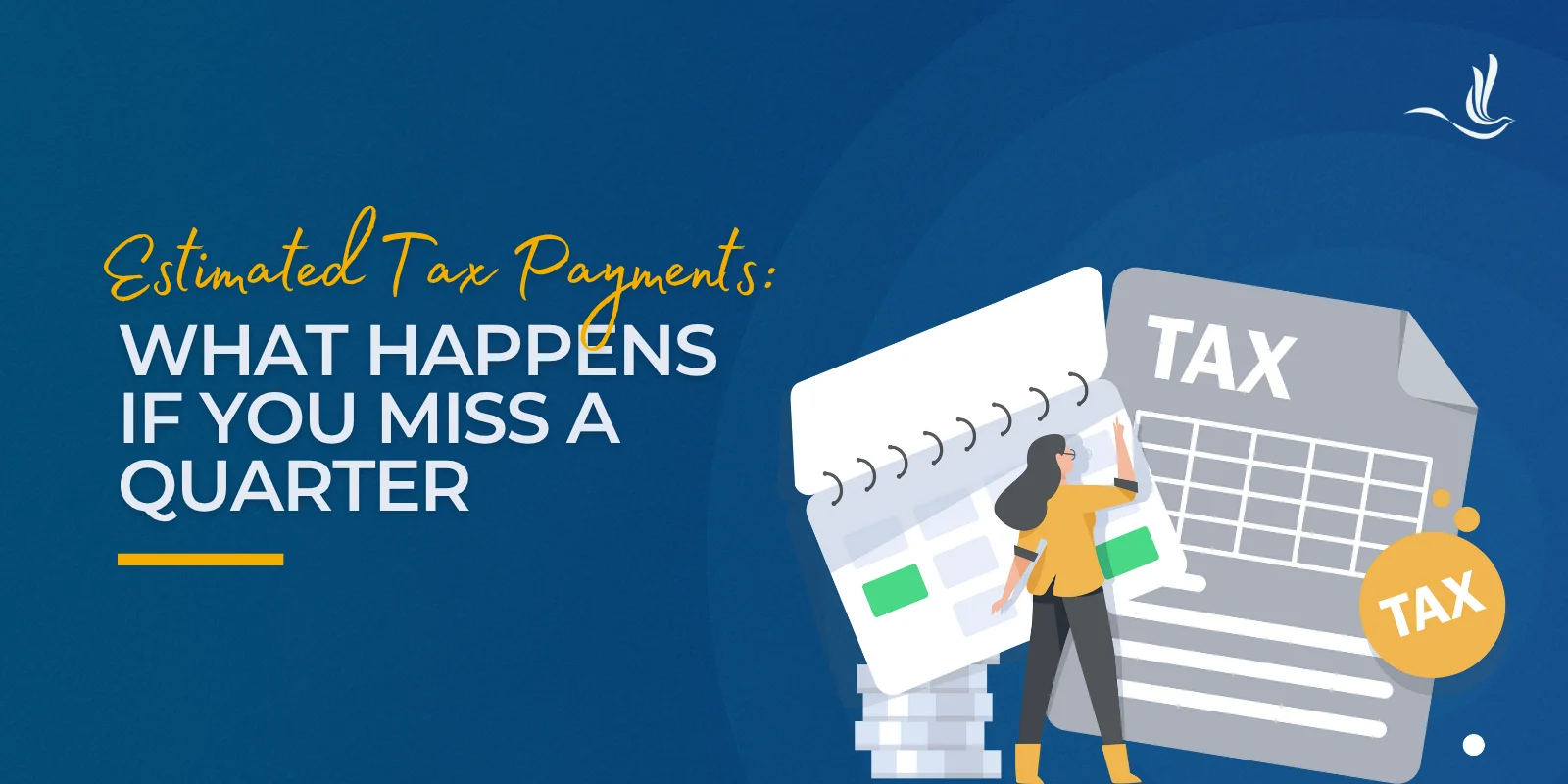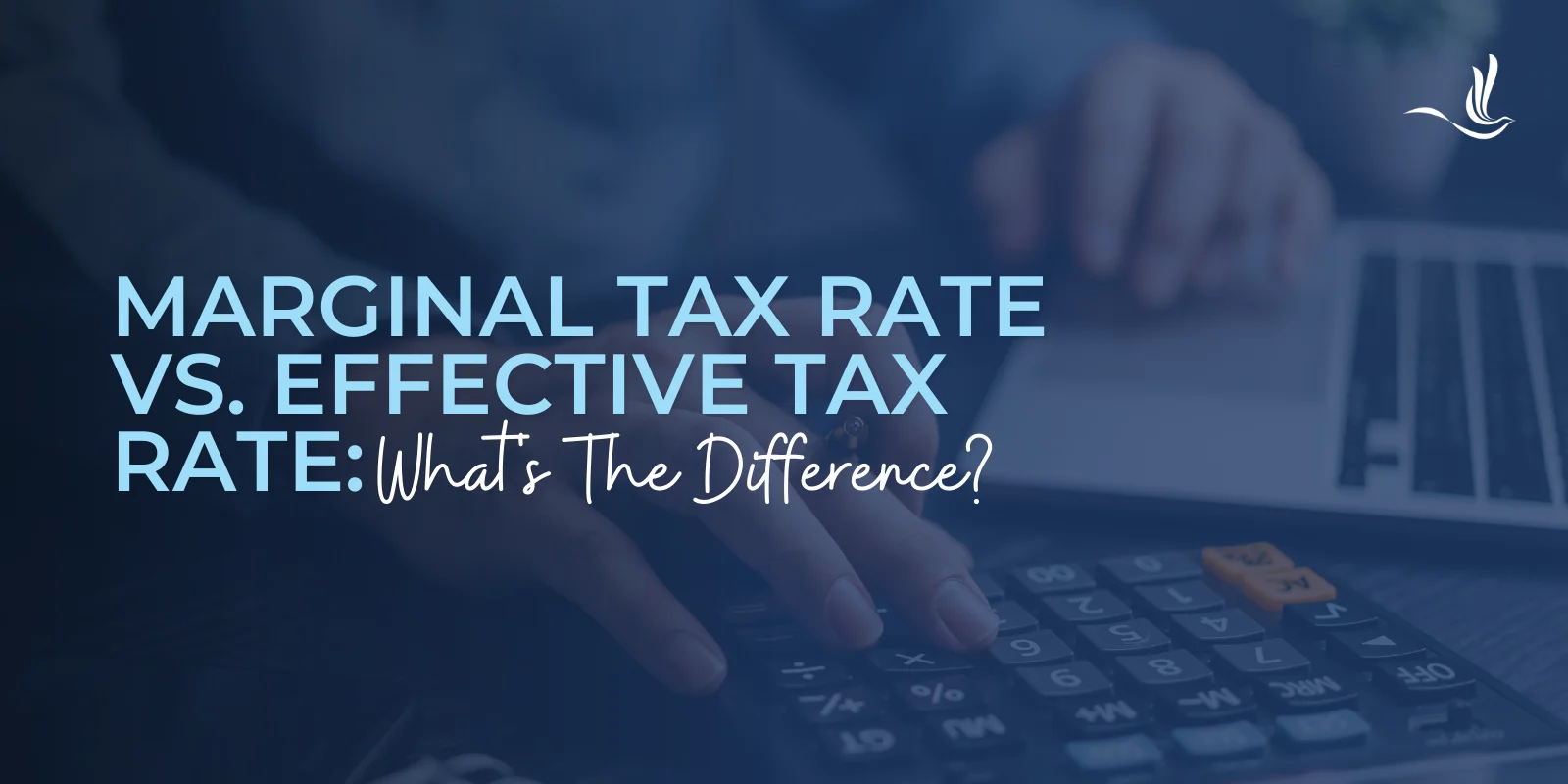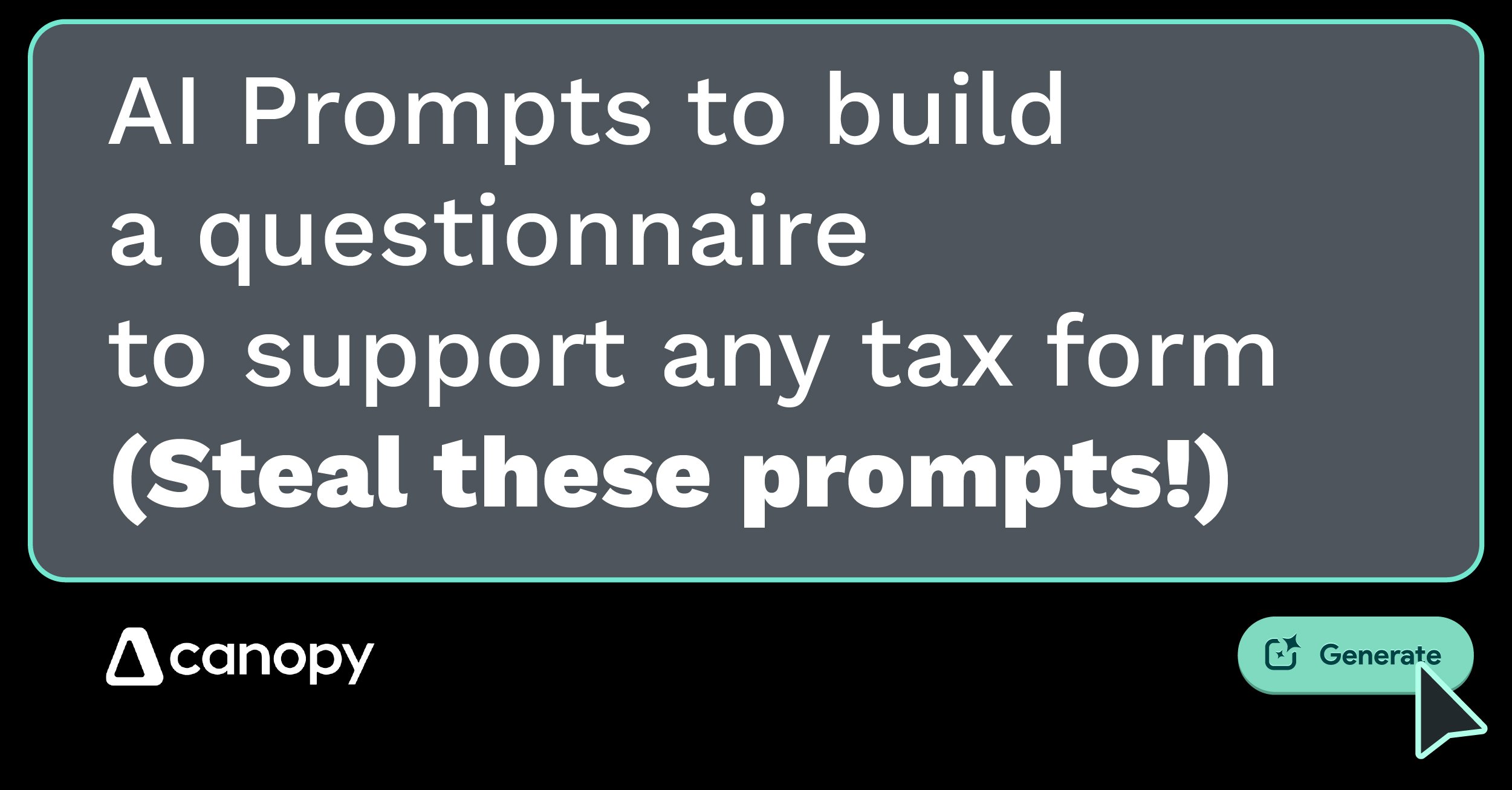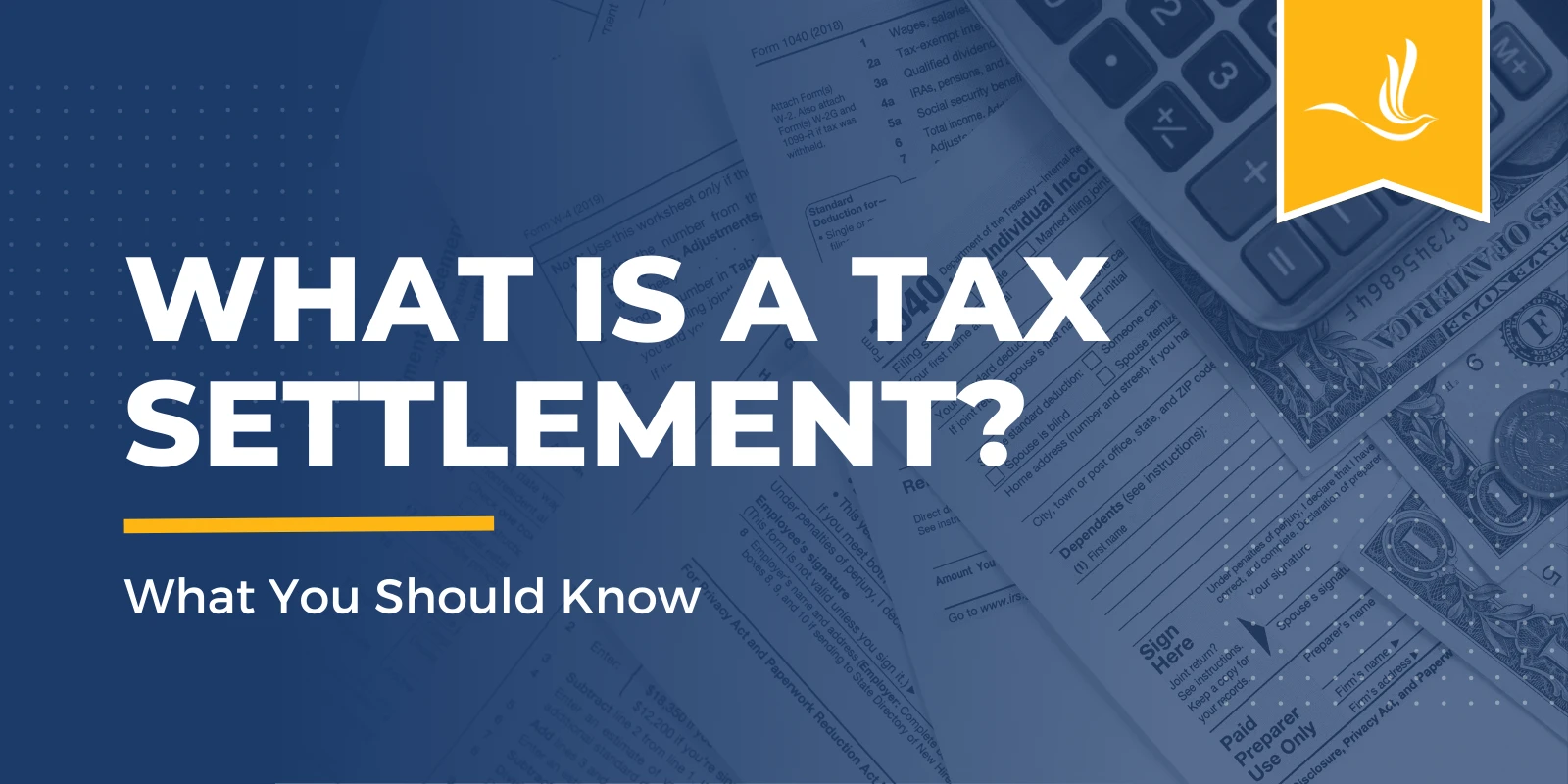Key Takeaways
Missing a quarterly estimated tax payment triggers IRS underpayment penalties and daily compounding interest until the balance is paid.
Each quarter is treated separately; paying extra later doesn’t erase penalties for earlier missed payments.
The IRS calculates penalties using your underpaid amount, the number of days late, and the current quarterly interest rate.
You may qualify for penalty relief through the annualized income method, reasonable cause waivers, or First-Time Penalty Abatement.
Making a late payment right away, adjusting future payments, or increasing paycheck withholding can reduce penalties.
Automating estimated tax payments or using a CPA’s guidance helps prevent future missed deadlines and keeps you compliant.
If you earn income that isn’t automatically taxed through payroll withholding, like freelance work, consulting, investments, or small business profits, you’re expected to make estimated tax payments four times a year. These quarterly payments help you stay current with the IRS so you don’t end up with a surprise bill and penalties at tax time.
But what happens if you miss one of those quarterly payments? Whether it slipped your mind or your income fluctuated unexpectedly, missing even one estimated tax deadline can trigger IRS underpayment penalties and interest charges that grow over time.
The good news: the system is fixable. The IRS offers several ways to reduce or avoid penalties if you act quickly, and you can plan ahead to prevent it from happening again.
Let’s break down exactly what happens when you miss a quarterly payment, how penalties are calculated, and what you can do right now to minimize the damage.
Understanding Estimated Tax Payments
Estimated taxes are essentially “prepayments” of income tax that you make throughout the year rather than all at once when you file.
What Are Estimated Taxes and Why Do They Exist?
The U.S. tax system is based on the principle of “pay as you go.” That means the IRS expects you to pay taxes on your income as you earn it, not months later at filing time. For most employees, this happens automatically through paycheck withholding. But for self-employed individuals, business owners, investors, and retirees with taxable income not subject to withholding, estimated tax payments are how you stay in compliance.
These quarterly payments generally cover:
Self-employment tax (Social Security and Medicare)
Additional taxes from dividends, capital gains, or rental income
Paying quarterly, you spread your tax burden evenly across the year and avoid both cash flow strain and underpayment penalties.
Who Needs to Pay Estimated Taxes
If you expect to owe $1,000 or more in taxes when you file your return, after accounting for withholding and credits, you’re required to make estimated payments. This rule commonly applies to freelancers, independent contractors, small business owners, landlords, partners in partnerships, and S Corporation shareholders. It also includes retirees or investors who receive income from dividends or capital gains without withholding.
In short, if you’re earning income that doesn’t have taxes automatically taken out, you’re likely responsible for making quarterly estimated tax payments.
Who Doesn’t Have to Pay Estimated Taxes
Some taxpayers are exempt from estimated payments. If you receive a regular paycheck with enough withholding to cover your total tax bill, you may not need to make quarterly payments. Similarly, if you had no tax liability in the prior year. For instance, if you owed nothing or received a full refund, you’re generally off the hook for estimated payments this year.
You can also avoid separate estimated payments by increasing withholding on your paycheck or retirement distributions, ensuring your taxes are still paid evenly throughout the year.
Quarterly Estimated Tax Deadlines
The IRS divides the year into four separate payment periods, each with its own due date. Paying on time is crucial because each quarter is assessed independently for penalties. Missing a payment in one quarter does not automatically affect the others, but late payments accrue penalties and interest.
The standard deadlines are:
April 15: Income earned January 1 – March 31
June 15: Income earned April 1 – May 31
September 15: Income earned June 1 – August 31
January 15 (following year): Income earned September 1 – December 31
It is important to note that if a due date falls on a weekend or federal holiday, it is extended to the next business day.
The IRS reviews each quarter independently when assessing penalties. That means paying extra in September won’t erase a missed payment from June. Because estimated taxes are time-sensitive, it’s important to treat each payment deadline as firm. Even a brief delay can add small, compounding interest charges that grow if not promptly addressed
Let’s look at an example. Suppose you owed $2,000 for your June 15 payment but forgot to send it. Even if you double your payment in September, the IRS will still charge interest on the $2,000 for the three months it was late.
What Happens If You Miss a Quarterly Estimated Tax Payment
Missing a quarterly deadline triggers an underpayment of estimated tax, which can lead to penalties and interest that grow the longer the payment remains unpaid.
Immediate IRS Treatment
When you miss a due date, the IRS immediately considers that period underpaid. You won’t receive instant notice. Instead, penalties and interest quietly begin to accrue the day after the payment was due. Most taxpayers first discover the penalty when they file their tax return and see it calculated automatically, or when they later receive a notice from the IRS.
The penalty functions much like interest on a short-term loan from the government. The longer the IRS is “waiting” for your money, the more you’ll owe in the end.
How One Missed Quarter Affects the Rest
Each quarter stands alone, so missing one payment doesn’t automatically affect later quarters. However, if you continue to underpay or delay, the penalties can compound across multiple quarters. This creates a snowball effect where interest continues to accumulate on each missed or late payment.
For example, say you were supposed to pay $2,500 each quarter and forgot the June 15 payment. If you make up for it in September, the IRS will still assess a penalty for the period from June 15 through September 15. Paying double later doesn’t erase the time-based penalty already incurred.
How the IRS Calculates the Penalty
The IRS calculates the underpayment penalty as interest on the unpaid amount for the number of days it was late. It’s not a flat fee, but rather a time-based charge that increases daily until the balance is paid.
The formula depends on three factors: the amount you underpaid, the length of time the payment was late, and the interest rate in effect for that quarter. The IRS updates this rate every quarter.
Penalty = Underpaid Amount x Daily Interest Rate x Number of Days Late
For instance, if you owed $3,000 for your June payment and didn’t send it until mid-September, you’d be charged interest for roughly 90 days at the quarterly rate. The total penalty might only be a few dozen dollars, but if multiple payments are missed, these costs can quickly add up.
The Safe Harbor Rule
The IRS Safe Harbor Rule protects you from penalties if you meet certain payment thresholds. You won’t owe an underpayment penalty if you’ve paid at least 90% of your current-year tax liability or 100% of your previous year’s total tax (110% for higher-income taxpayers with AGIs above $150,000).
Even if you miss a specific due date, as long as your total annual payments hit those targets by year-end, the IRS considers you compliant under the safe harbor rule.
Uneven Income and the Annualized Income Method
Many self-employed professionals and small business owners don’t earn evenly throughout the year. The IRS recognizes this by allowing use of the annualized income installment method, reported on Form 2210, Schedule AI. This method lets you match payments to your actual income pattern, rather than assuming earnings were spread evenly across quarters.
For example, a wedding photographer who earns most of their income between May and October can use this method to show that their payments reflected when income was received, potentially eliminating or reducing penalties for earlier “underpayments.”
Interest on a Penalty
In addition to the underpayment penalty, the IRS also charges interest on unpaid taxes and penalties. This interest is calculated daily and compounds until the balance is fully paid.
Interest = (Unpaid Tax + Penalty) × Daily Interest Rate × Number of Days Late
To illustrate, imagine you missed a $5,000 June payment and didn’t pay until November. The IRS would charge both a penalty (based on the number of days late) and interest that continues to accrue on that balance for nearly five months. Over time, these charges can become significant, especially if left unpaid through multiple quarters.
The takeaway is simple; paying sooner always costs less than paying later. The longer you wait, the more interest you’ll owe.
How to Pay or Resolve a Missed Estimated Payment
Even if you missed a quarterly estimated tax payment, it’s not too late to take action. The IRS encourages taxpayers to make payments as soon as possible to minimize both penalties and interest. Acting promptly demonstrates good faith and helps prevent the missed payment from snowballing into a larger tax liability.
Ways to Make a Late Payment
There are several IRS-approved methods for submitting a missed payment, each with its own advantages:
IRS Direct Pay: This allows you to make an immediate payment from your checking or savings account without any fees. Direct Pay is ideal for individuals because it’s fast, secure, and provides instant confirmation of your payment.
EFTPS (Electronic Federal Tax Payment System): Designed for businesses and individuals with multiple or recurring payments, EFTPS lets you schedule future payments or catch up on missed installments. This is particularly useful if you want to automate payments for the rest of the year to avoid missing additional deadlines.
Mail a Check or Money Order: You can submit a check along with a Form 1040-ES payment voucher. Clearly indicate the quarter you’re paying for to ensure the IRS applies it correctly. Include your Social Security number or taxpayer ID to avoid delays in crediting the payment.
The IRS generally applies your late payment to the earliest outstanding quarter but specifying which quarter the payment is for can help prevent misallocation.
Reporting and Paying Penalties
Underpayment penalties are calculated automatically by the IRS, but you can also report and pay them when filing your tax return. If you expect penalties, you can complete Form 2210 to either calculate or request a waiver.
For taxpayers who missed a payment, it’s important to include the total amount of estimated tax already paid, the specific quarter the payment is for, and any additional payments made to reduce the balance
Let’s look at an example. A freelancer who forgot the June 15 installment can submit the payment immediately using Direct Pay and note it is for the second quarter. When filing the annual return, the freelancer calculates the underpayment penalty on Form 2210. Paying promptly reduces interest and avoids further accrual.
How to Reduce or Remove an Estimated Tax Penalty
If you’ve already incurred an underpayment penalty, the IRS provides several ways to reduce or eliminate it depending on your circumstances. Understanding these options can save hundreds or even thousands of dollars, especially for those with irregular or seasonal income.
Annualized Income Method
For taxpayers whose income fluctuates throughout the year, the annualized income method allows you to demonstrate that estimated payments were proportionate to the actual income received in each quarter.
You can do so by completing Form 2210, Schedule AI, which breaks down income and deductions by period. By annualizing income, the IRS can recognize that early quarters were underpaid for good reason, lowering penalties.
Reasonable Cause Waiver
The IRS may waive penalties if you missed a payment due to circumstances beyond your control. Acceptable reasons generally include:
Serious illness, disability, or medical emergencies
Natural disasters, casualty losses, or other federally declared events
Death or severe hardship affecting the taxpayer or immediate family
To apply, submit a written explanation detailing the situation along with supporting documentation. The IRS evaluates each request individually, and providing thorough evidence increases the likelihood of a waiver.
First-Time Penalty Abatement (FTA)
For taxpayers with a clean compliance record, the IRS offers a First-Time Penalty Abatement option, which can eliminate penalties for a single missed payment. Eligibility requirements include:
Filing and paying all required returns on time for the last three years
No prior penalties in that period
Being current with all tax obligations
FTA is often granted automatically or after a phone request. Keep in mind, though, that while the penalty itself may be removed, interest charges typically continue to accrue, so paying the balance remains essential.
Other Strategies
In addition to using the annualized income method, reasonable cause waivers, or first-time penalty abatement, there are other strategies to manage missed estimated payments. If you anticipate that your income will increase later in the year, you can make slightly higher future estimated payments to help offset penalties from earlier quarters. This approach allows you to balance your tax liability across the remaining periods and reduce additional interest accrual. For taxpayers who cannot pay the full balance immediately, the IRS also offers installment agreements. While interest continues to accrue during the payment plan, penalties may be reduced or partially waived, providing a manageable way to stay compliant without a large lump-sum payment.
Avoiding Future Estimated Tax Penalties
Preventing penalties is far easier than fixing them after the fact. With a proactive approach, you can ensure your payments remain on track and reduce stress.
Automate Your Payments
Automating payments through EFTPS or scheduling them with IRS Direct Pay ensures deadlines are never missed. Automation reduces the risk of human error and provides a clear record of each payment, which can be helpful if the IRS questions the timing or amount.
Adjust Withholding Midyear
If you receive W-2 income or retirement distributions, increasing withholding midyear can make up for a missed estimated payment. The IRS treats withholding as if it were paid evenly throughout the year, helping offset underpayment penalties for previous quarters.
Maintain Accurate Records
Keeping track of your income and expenses on a monthly or quarterly basis allows you to project estimated taxes more accurately. Accounting software such as QuickBooks, FreshBooks, or even detailed spreadsheets can track variable income, calculate estimated payments, and ensure nothing falls through the cracks.
Work with a Tax Professional
A CPA or enrolled agent can evaluate your income patterns, recommend payment strategies, and ensure compliance with IRS rules. Professionals can also assist with applying the annualized income method, safe harbor calculations, or penalty abatements; particularly valuable for small business owners or self-employed taxpayers with irregular earnings.
Frequently Asked Questions: Missing Quarterly Estimated Tax Payments
Do I have to make estimated tax payments every quarter? Yes. The IRS expects taxpayers with income not subject to withholding, such as freelancers, small business owners, and investors, to make estimated payments four times a year. Each payment covers a specific quarter and missing one can trigger underpayment penalties and interest.
Can you delay quarterly tax payments? You can technically pay late, but delaying a quarterly estimated tax payment will result in penalties and daily interest starting the day after the due date. The sooner you pay the missed installment, the smaller the penalty will be.
Does the IRS forgive underpayment penalties? Yes, in certain cases. The IRS may waive or reduce the underpayment penalty if you qualify for a reasonable cause waiver, use the annualized income method, or meet the First-Time Penalty Abatement criteria. Acting quickly and providing documentation improves your chances of approval.
Is there an extension for estimated tax payments? No. Extensions apply only to filing your tax return, not to making estimated tax payments. Even if you file forfile a tax extension, quarterly estimated payments are still due on their original dates to avoid penalties.
How long do I have to make estimated tax payments? Estimated tax payments are due four times a year, typically in April, June, September, and January. Payments continue each year if you earn income not subject to withholding or until your tax liability falls below the IRS threshold for required payments.
Tax Help for Estimated Tax Payments
Missing a quarterly estimated tax payment happens to even the most diligent taxpayers. Fortunately, it’s not catastrophic, the resulting penalties function more like interest charges than fines, and they can often be minimized or waived entirely.
The key is to act quickly. Make the missed payment as soon as possible, explore relief options like the annualized income method or first-time abatement, and build better systems for the future. With a bit of organization and a proactive approach, you can avoid penalties, protect your cash flow, and stay on the IRS’s good side year after year. Optima Tax Relief is the nation’s leading tax resolution firm with over $3 billion in resolved tax liabilities.
If You Need Tax Help, Contact Us Today for a Free Consultation


























